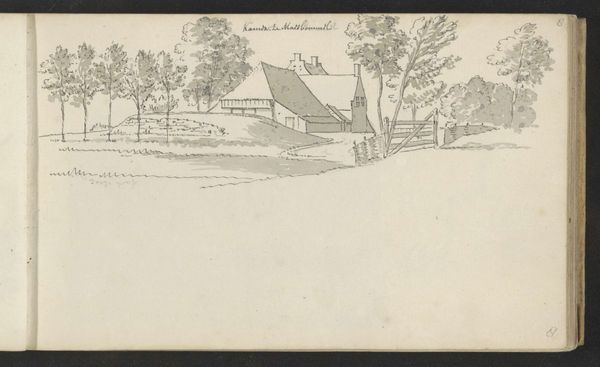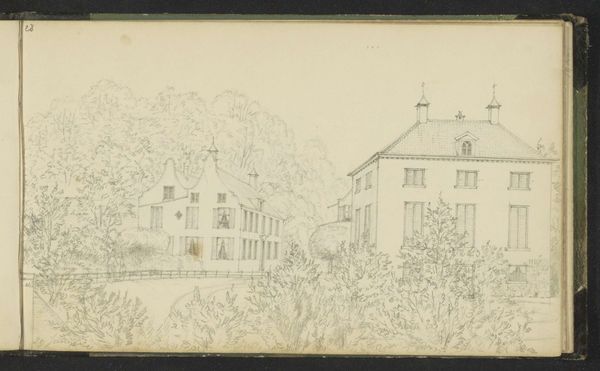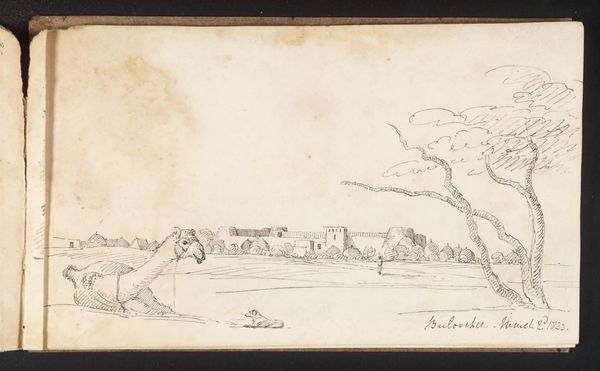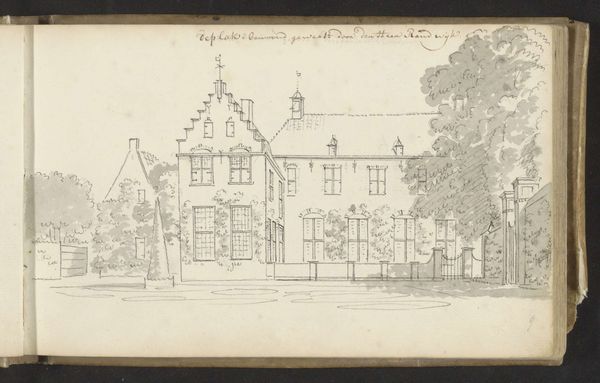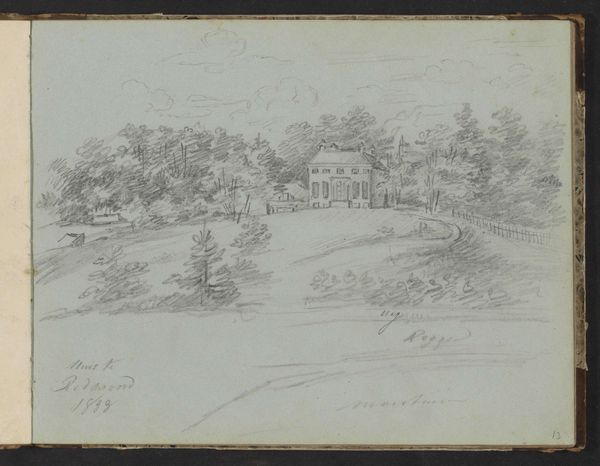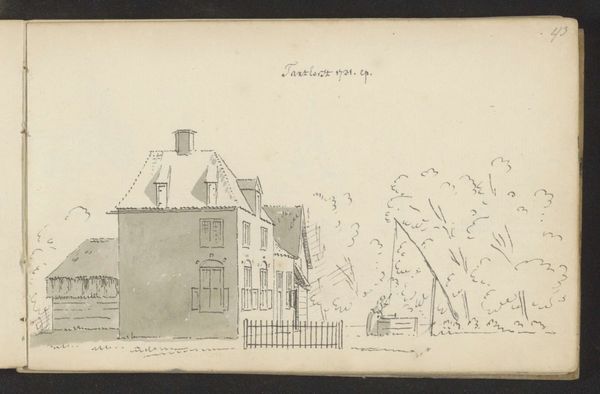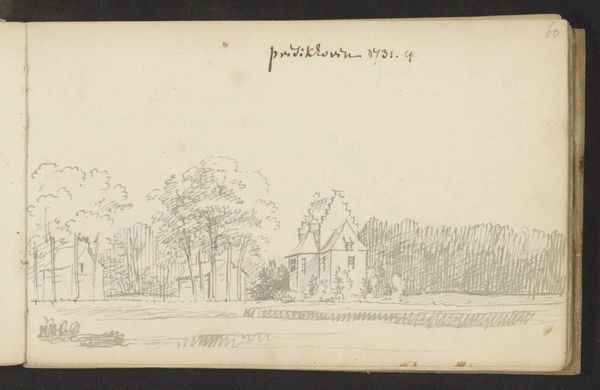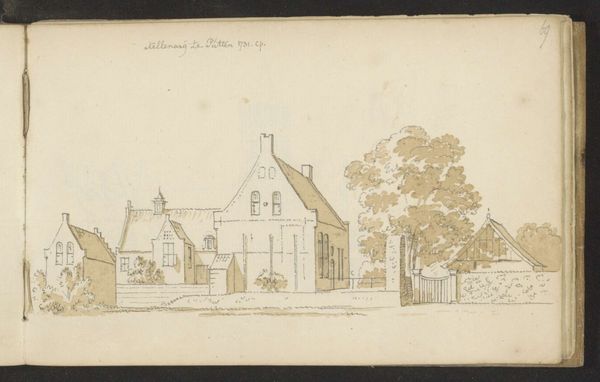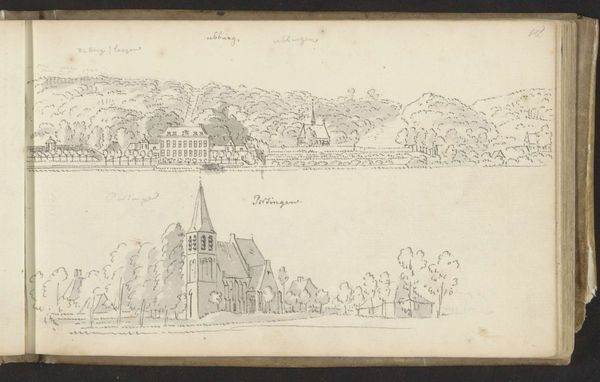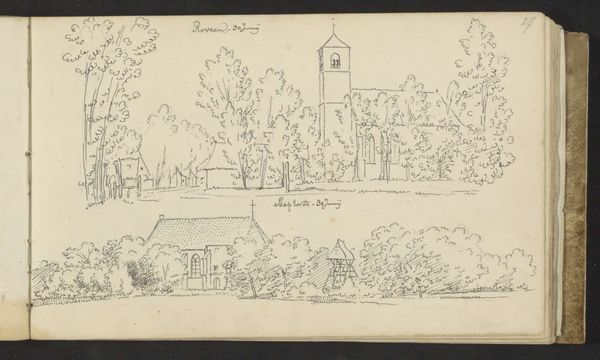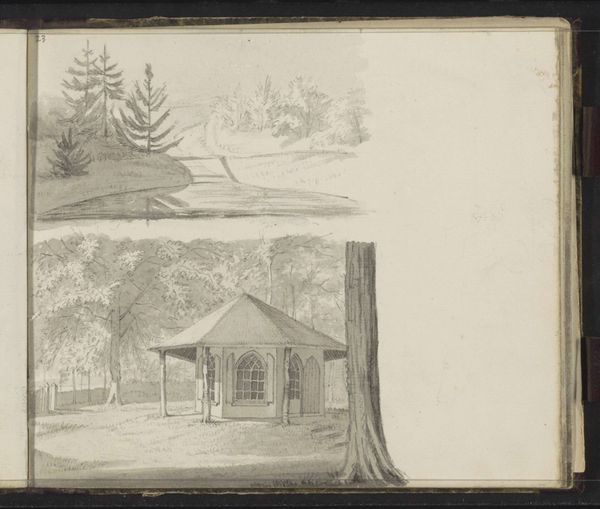
drawing, paper, ink
#
drawing
#
quirky sketch
#
dutch-golden-age
#
pen sketch
#
sketch book
#
landscape
#
paper
#
form
#
personal sketchbook
#
ink
#
sketchwork
#
pen-ink sketch
#
line
#
pen work
#
sketchbook drawing
#
genre-painting
#
storyboard and sketchbook work
#
sketchbook art
#
realism
Copyright: Rijks Museum: Open Domain
Editor: This is "Huis Leeuwestein te Heenvliet," a drawing from 1731 by Abraham de Haen the Second, now at the Rijksmuseum. It’s a delicate ink and paper sketch. I'm struck by the bareness of the scene, but I'm also interested in how de Haen rendered form here, and I am wondering: what visual elements do you think are most prominent? Curator: I am immediately drawn to the use of line. Notice the varied application, ranging from thin, almost ethereal strokes defining the foliage, to thicker, more deliberate lines articulating the architectural structure of the house. Observe also the use of tonal variation achieved through hatching and cross-hatching to indicate depth. Are these lines successful, in your estimation? Editor: I can see how those thin lines evoke light and air around the building, creating a sense of depth despite the seemingly flat plane, almost like he is implying perspective rather than creating it directly. It almost reads like a plan, an architectural rendering of lines. Curator: Precisely. Consider the deployment of empty space around the central structure. It enhances the viewer's focus on the core subject. Notice how the geometric structure is further accentuated by these framing trees? How would you evaluate their purpose, solely in terms of design? Editor: I suppose it draws my eye. Without them, the sketch would lack definition or boundaries. This bare setting is also quite distinct and fascinating considering this work is an example of the Dutch Golden Age. It also shows the hand of the artist as process more than just capturing a landscape, doesn't it? Curator: Indeed. The materiality of the paper and the immediacy of the ink allow for a raw engagement with form itself. The success of the work resides in its sophisticated organization and its formal clarity. Thank you. Editor: This really enhanced my understanding, especially noting those delicate lines to establish the form.
Comments
No comments
Be the first to comment and join the conversation on the ultimate creative platform.

